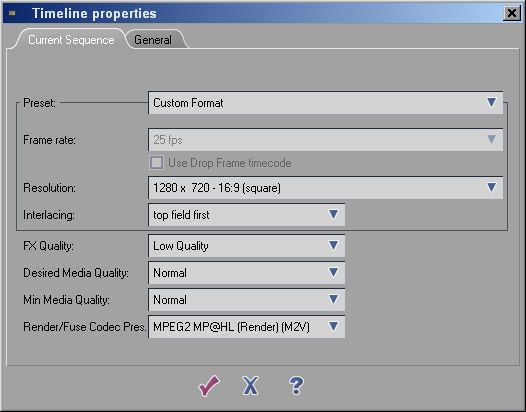HDV – the new big thing
The really big difference between LE 5 and LE 6 is the new version’s claimed support for HDV footage. This is consumer high-definition MPEG-2 video and, currently, only two companies are producing HDV camcorders - JVC (GR-HD1 and JY-HD10) and Sony (HDR-FX1, and forthcoming HVR-Z1).
Check out DVdoctor's HDR-FX1 review and Showreel magazine’s JVC and Sony reviews.
As with DV, this MPEG-2 footage is fed from the camcorder’s FireWire port into LE 6 Pro’s breakout box, then into the PC via USB 2.0.
Pinnacle says that Edition 6 provides an accurate method of cutting HDV’s MPEG IPB frame structure without needing excessive rendering or causing quality loss. But HDV capture from Sony camcorders doesn’t work in V6.0, and won’t do until the arrival of a 6.1 updater that’s currently in late beta.
This is expected to include batch capture that works well and takes time-code; and offers slick manual capture (judging by the beta we saw) and the ability to properly send out finished HDV projects to Sony camcorders.
During our first tests, prior to getting hands on with the 6.1 beta, we had no HDV camcorder or HD monitor to try. However, Bob Crabtree – who admits he’s no expert with Edition - did some tests using the 18secs of HDV footage provided on CD with LE6 Pro.
He found, though, that he could do little with it, in terms of editing and preview, because there were too many dropped frames during playback. The reported frame rate was typically between 8fps and 12fps, and this on a PC with 2GByte RAM, a single Athlon 64 3200 processor and fast Serial ATA hard disks.
This, we initially thought, was something else that Pinnacle needed to sort in an updater. However, in the lead up to VideoForum 2005 (Jan 25-27), where DVdoctor was to have on its stand all the available Windows prosumer editing solutions for HDV, Bob looked again at Liquid Edition 6.0.
This time, though, he did so in the company of Alcatel’s Hendrik Dacquin, well-known to DVdoctor forum regulars as a streaming video expert, but now largely concentrating on interactive television applications.
Hendrik is very familiar with earlier versions of Edition and thought that the dropped-frame problem with HDV might be caused by a foible with Edition that has long irked him - the fact that every project, typically, has the same timeline properties as every other, rather than being optimised for individual types of footage.
With most video editing programs, you choose a project template appropriate to the type and resolution of footage being edited, whereas one of Edition’s selling points is that it allows editing of different types of footage in projects based on a single default template.
Moreover, it’s claimed that you can successfully edit with a mix of different types of footage in projects based on that one default template.
The upshot was that, as when Hendrik works in Edition with standard-definition footage, he did some slight juggling with timeline settings – and quickly came up with a combination that massively enhanced Edition’s ability to play these HDV clips.
Indeed, he ended up being able to do some quite fancy stuff - such as 3D spins of the moving footage - and preview it on the PC’s monitor at the full frame rate – admittedly, though, this was with 720p footage not the heavier duty 1080i stuff that comes in from the Sony camcorders.
If you have Edition 6 and want to try editing the HDV footage that Pinnacle supplies, see the image here for suitable timeline settings, and then don’t forget to save them as a custom timeline template for later use.

Choosing the right timeline settings in LE 6
makes a huge difference in HDV editing
Edition’s documentation does mention that, with HDV, you need to change the timeline settings to suit the footage (something that Bob C missed) but, in our view, he won’t be the only person who overlooks this.
Pinnacle, we reckon, shouldn’t rely on users spotting such a critical bit of information and could avoid the problem all together by finally bringing the program into line with most of its competitors.
What’s needed is for Pinnacle to supply, as standard, a full set of custom timeline templates that users can pick from when creating new projects. Were this change made, users would find that the program works much better for them - reducing complaints and support issues - even with non-HDV projects.









